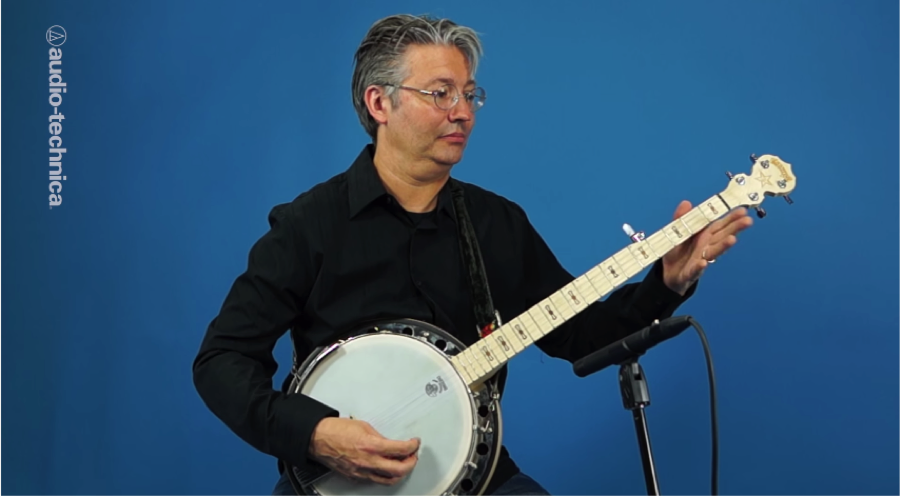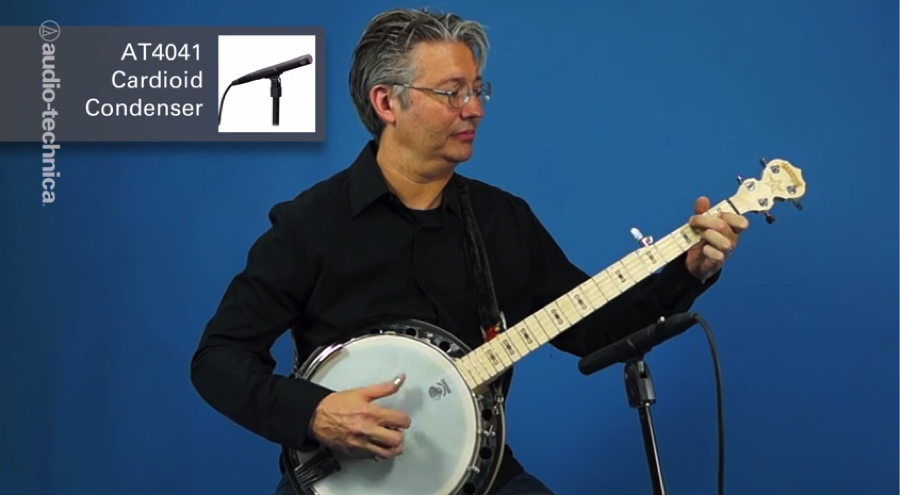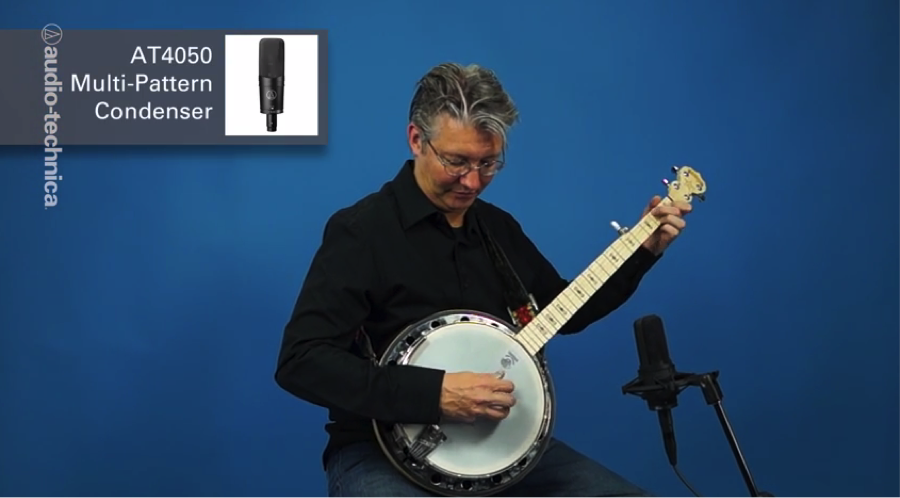The modern 5-string banjo may be thought of as quintessentially American, but the origins of the banjo can be traced back centuries through Europe to Africa.
As part of our basic recording techniques video series, here are some tips to put the right mic in the right spot for your banjo.
 The banjo, more than most instruments, benefits from some distance when being miked. If isolation concerns make this impossible, then move the mic closer.
Most of the brightness of the instrument comes from the edge where the resonator reflects sound through the metal flange. Most of the body comes directly from the head. Experiment with aiming in this area to find the ideal placement for your instrument. Pointing at the center of the head not only yields a dull sound, but also can pick up excessive noise from the finger and thumb picks when close-miked.
The banjo, more than most instruments, benefits from some distance when being miked. If isolation concerns make this impossible, then move the mic closer.
Most of the brightness of the instrument comes from the edge where the resonator reflects sound through the metal flange. Most of the body comes directly from the head. Experiment with aiming in this area to find the ideal placement for your instrument. Pointing at the center of the head not only yields a dull sound, but also can pick up excessive noise from the finger and thumb picks when close-miked.
Small Diaphragm Condenser Aimed Slightly Under the Neck
The fast transient response of a small diaphragm condenser, like the AT4041, is ideal for a dynamic instrument like a banjo and can capture the detail of a busy bluegrass part. Set the mic approximately 11 inches away from the banjo, angled slightly under the neck.
Large Diaphragm Condenser Set to Cardioid Aimed Slightly Below the Neck
For a more natural sound try an AT4050 large condenser set to cardioid and placed in the same spot as the AT4041. The open top end and extended low-end response of the AT4050 is well suited to this approach.
Audio-Technica has the mic for any banjo. On the stage or in the studio, Audio-Technica has you covered.